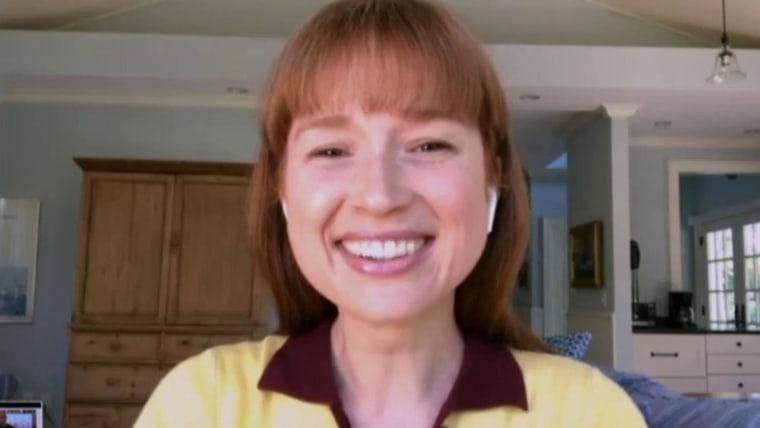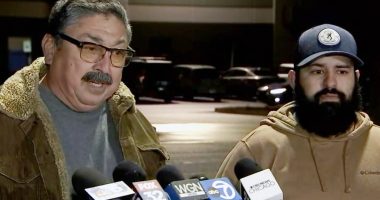It didn’t surprise me that last weekend’s rediscovery of actor Ellie Kemper’s involvement in the Veiled Prophet Organization, or VPO, went viral. The VPO is both baffling and horrifying: Its antiquated debutante balls feature a masked Veiled Prophet protected by “Bengal Lancers” and a Queen of Love and Beauty, attended by maids and junior maids. The very first published image of a Veiled Prophet from 1878 is deeply disturbing (a spectral figure in white robes and a pointy hat holds two guns and looks suspiciously Klan-like).
Whether Kemper knew the history of the VPO is unclear, but that history is the far more interesting story.
The easy story, and the story that has been shared many times now, focuses on Kemper, who as a teen was crowned Queen of Love and Beauty at the VPO’s annual debutante ball in 1999. Whether Kemper knew the history of the VPO is unclear, but that history — with its deeper connections to white supremacy and class inequality in St. Louis — is the far more interesting story.
The VPO was created in part as a response to the St. Louis General Strike in July 1877, when white and Black rail and factory workers began a weeklong strike against wage cuts. In response, in early 1878, former Confederate Col. Alonzo William Slayback and his brother Charles Slayback gathered powerful businessmen and politicians from around St. Louis to form the Order of the Veiled Prophet. The VPO was built on a potent mixture of secrecy, elitism, pomp and ritual, and it was intended to reassert the power and values of the wealthy white men who considered themselves to be the true fathers of St. Louis.
According to the mythology created by Slayback, the Veiled Prophet figure is a veiled, wealthy man from the geographically nonspecific (but definitely racist) “east” who expects opulent receptions and visits St. Louis annually as a special blessing. At the ball, daughters of VPO members are presented (escorted by other wealthy men), and the prophet selects one to reign as Queen of Love and Beauty. (The first Queen was Alonzo Slayback’s daughter Susie.) To join in 1878, VPO members paid a $100 initiation fee; at about one-sixth of a workingman’s yearly wage, this was enough to maintain exclusivity. The group also didn’t allow Black members until 1979.
For more than a century, Black St. Louisans have protested the VPO and the systems it both symbolized and perpetuated — systems that support or protect white people through the domination or silencing of nonwhite people.
For example, the VPO frequently conflated wealth, success and a selectively defined moral good, qualities made exclusive by the organization’s whites-only membership. Early 20th century middle-class Black St. Louisans looking to become involved in the VPO (but banned by their race) created their own African (or Colored) Veiled Prophet Balls, insisting that they also be considered prominent and successful men of society.
From 1965 to 1984, the Action Committee to Improve Opportunities for Negroes, or ACTION, an integrated group, protested at all VPO events. Group members chained themselves to parade floats, handed out leaflets, forcibly unmasked one prophet (an executive at Monsanto) and held parody balls. ACTION used these protests to target major corporations headed by VPO members, demanding that those business leaders fix policies that suggested that white workers were more valuable or more appealing than Black workers.
From the beginning, the VPO demonstrated a close relationship between wealthy white St. Louisans and law enforcement: The first Veiled Prophet (1878), and the only one revealed willingly, was John G. Priest, the police commissioner, who had been actively involved in violently ending the 1877 strike. In December 2015, Sam Dotson, then the police chief, was pictured at the VPO Ball, and activists again noted the explicit connection between the police force and economic control of the city.
This problematic connection continues. In July 2015, after the shooting of Michael Brown in Ferguson in August 2014, Missourians Organized for Reform and Empowerment, or MORE, protested the VPO with a Twitter campaign (#unveiltheprofit) and other demonstrations. MORE understood the Veiled Prophet’s symbolic value as both a racist figure and a representation of the city’s elite. Thus, protesting the VPO was a way to target the economic system that supported racist policing practices.
From the beginning, the VPO demonstrated a close relationship between wealthy white St. Louisans and law enforcement.
Over the last 50 years, the VPO has tried to respond to criticism: It allowed Black members in 1979; it changed the name of the parade in 1995; it created community partnerships with the Royal Vagabonds, an all-Black organization; and it added a charity component to members’ and their daughter’s obligations. (The ball was also moved to Christmastime, dissociating it from the parade.)
Other changes seem to have been motivated by fear rather than a desire to address inequality: After activists started chaining themselves to floats in the 1960s and ’70s, the Queen and her maids stopped being featured in the parade, and even the prophet himself skipped it from 1969 to 1973; the parade was moved to the daytime, and its route was changed to avoid Black neighborhoods.
Today, the power of past and present VPO members, the vast majority of whom are or were white, is etched into the landscape of St. Louis on buildings and institutions and as street names. Particularly well-known names of past members include Kemper (Kemper Art Museum, named for Ellie Kemper’s grandmother), Busch (Anheuser-Busch, Busch Stadium), Schlafly (Schlafly Library, Schlafly Taproom and, of course, the political family), Danforth (Washington University in St. Louis’ main campus, the Danforth Campus, John C. Danforth Center on Religion and Politics) and Schnuck (Schnuck’s is a major local supermarket chain).
Arguing over malicious intent and Ellie Kemper’s age and culpability misses the broader problems at play here. Instead, we should use this as an opportunity to examine the VPO’s possessive investments in elite whiteness and the exclusive networks through which white supremacy has operated in St. Louis across the over 140-year history of the VPO. The Veiled Prophet may be a uniquely weird St. Louis tradition, but it grew out of a far more prevalent societal desire to consolidate white economic and cultural power. And the organizations that support that desire still exist around the country. It shouldn’t take a celebrity-based scandal to expose them.
Source: | This article originally belongs to Nbcnews.com











